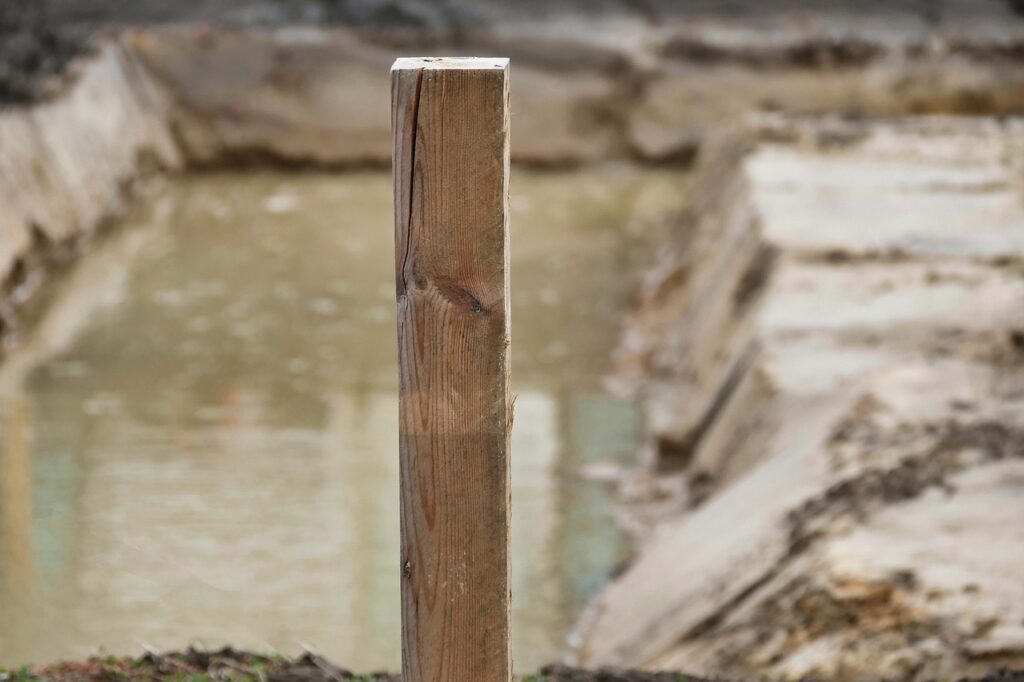Assessing water quality in a distribution network based on hydraulic conditions
Tomperi J. a
a University of Oulu, Pentti Kaiteran katu 1, Oulu, 90570, Finland
E-mail: jani.tomperi@oulu.fi
https://doi.org/10.29258/CAJWR/2024-R1.v10-1/40-67.engThematic cluster: Hydro Engineering
Type of paper: Research paper

Abstract
Abnormalities in hydraulic conditions inside a water distribution network are strongly related to the deterioration of drinking water quality. Leaking pipes and valves cause changes to the hydraulic conditions and allow the entry of impurities into the distribution system. Sudden flow and pressure shocks can detach soft deposits and biofilms from the pipe surface, resulting in deterioration of water quality. Online water quality measurements in a distribution network are scarce, but more common online flow and pressure measurements reveal the changes in hydraulic conditions in a distribution network and can be utilized to assess the water quality continuously and near real-time via modelling. Here, a data-driven model based solely on the online flow and pressure measurements in a distribution network for assessing the water quality at the end of an urban district metered area is presented. With the accuracy of R2 0.77, the developed data-driven model is able to assess the level of and the changes in potable water quality in a non-laborious and cost-effective way, also enabling proactive operations to ensure the distribution of high-quality drinking water to the consumers.
Available in English
Download the article (eng)For citation: Tomperi, J. (2024). Assessing water quality in a distribution network based on hydraulic conditions. Central Asian Journal of Water Research, 10(1), 40-67. https://doi.org/10.29258/CAJWR/2024-R1.v10-1/40-67.eng
References
Aisopou, A., Stoianov, I. & Graham, N.J.D. 2012 In-pipe water quality monitoring in water supply systems under steady and unsteady state flow conditions: A quantitative assessment. Water Research, 46, 235-246. doi: https://doi.org/10.1016/j.watres.2011.10.058
Anderson, C. W. 2005 Chapter A6.7 Turbidity. in Wilde, F.D. (ed.) U.S. Geological Survey, National field manual for the collection of water-quality data: U.S. Geological Survey Techniques of Water- Resources Investigations, book 9, chaps. A1-A10, available online at http://pubs.water.usgs.gov/ twri9A
Arlot S., Celisse A. 2010 A survey of cross-validation procedures for model selection. Statistics Surveys, 4, 40–79.
Chapman, D. 1996 Water Quality Assessments – A Guide to Use of Biota, Sediments and Water in Environmental Monitoring. Chapman D. (ed.) – 2nd edn, E&FN Spon, an imprint of Chapman & Hall. Cambridge, Great Britain.
Clark, R.M. & Haught, R.C. 2005 Characterizing pipe wall demand: implications for water quality modelling. Journal of Water Resources Planning and Management, 131(3), 208–217.
Ghebremichael, K., Gebremeskel, A. & Trifunovic, N. 2008 Modelling disinfection by-products: coupling hydraulic and chemical models. Water Science and Technology: Water Supply, 8(3), 289–295.
Hastie, T., Tibshirani, R. & Friedman, J. 2009 The elements of statistical learning: Data mining, inference and prediction. Springer Series in Statistics. Springer-Verlag, New York. 2nd ed.
Lehtola, M.J., Laxander, M., Miettinen, I.T., Hirvonen, A., Vartiainen, T., Martikainen, P.J. 2006a. The effects of changing water flow velocity on the formation of biofilms and water quality in pilot distribution system consisting of copper or polyethylene pipes. Water Research, 40 (11), 2151–2160.
Lehtola, M.J., Miettinen, I.T., Hirvonen, A., Vartiainen, T., Martikainen, P.J. 2006b. Resuspension of biofilms and sediments to water from pipelines as a result of pressure shocks in drinking water distribution system. In: International Conference (IWA) Biofilm Systems VI, Amsterdam, September 24–27, 2006, CD-Rom.
Li, C., Wang, D., Xu, X., Xu, M. & Wang, Z. 2017 Spatial variations in the occurrence of potentially genotoxic disinfection by-products in drinking water distribution systems in China. Environmental Pollution, 231(2), 1463-1468. doi: https://doi.org/10.1016/j.envpol.2017.09.008
Mains, C. 2008 Biofilm control in distribution systems. The national environmental services center at west Virginia university, 8(2).
Manasfi, T., De Méo, M., Di Giorgio, C., Coulomb, B. & Boudenne, J-L. 2017 Assessing the genotoxicity of two commonly occurring byproducts of water disinfection: Chloral hydrate and bromal hydrate. Mutation Research, 813, 37–44. doi: https://doi.org/10.1016/j.mrgentox.2016.11.009
Meyers, G., Kapelan, Z., Keedwell, E. 2017 Short-term forecasting of turbidity in trunk main networks. Water Research, 124, 67-76. doi: https://doi.org/10.1016/j.watres.2017.07.035
Montgomery, D.C., Peck, E.A. & Vining, G.G. 2012 Introduction to linear regression analysis. 5th edition. A JohnWiley & Sons, Inc, Hoboken, New Jersey.
Mukundan, R., Pierson, D. C., Schneiderman, E. M., O’Donnell, D. M., Pradhanang, S. M., Zion, M. S., et al. 2013 Factors affecting storm event turbidity in a New York City water supply stream. Catena, 107, 80–88.
Mustonen, S.M., Tissari, S., Huikko, L., Kolehmainen, M., Lehtola, M.J. & Hirvonen, A. 2008 Evaluating online data of water quality changes in a pilot drinking water distribution system with multivariate data exploration methods. Water Research, 42, 2421-2430. doi: https://doi.org/10.1016/j. watres.2008.01.015
Seyoum, A.G., Tanyimboh, T.T. 2013 Pressure-dependent network water quality modelling. Water Management. Proceedings of the Institution of Civil Engineers. doi: https://doi.org/10.1680/ wama.12.00118
Sunela, M.I., Puust, R. 2015 Real Time Water Supply System Hydraulic and Quality Modeling – A Case Study. Procedia Engineering, 119, 744-752. https://doi.org/10.1016/j.proeng.2015.08.928
Tomperi, J. 2020 Modelling the potable water quality in a distribution network based on the hydraulic conditions, Drink. Water Eng. Sci. Discuss. [preprint]. https://doi.org/10.5194/dwes-2020-20
Tomperi, J., Isokangas, A., Tuuttila, T., Paavola, M. 2022 Functionality of turbidity measurement under changing water quality and environmental conditions. Environmental Technology, 43:7, 1093-1101. doi: https://doi.org/10.1080/09593330.2020.1815860
Weston, S.L., Collins, R.P., Boxall, J.B. (2021) An experimental study of how hydraulic transients cause mobilisation of material within drinking water distribution systems. Water Research, 194. https://doi.org/10.1016/j.watres.2021.116890
Vreeburg, I.J.H.G., Boxall, D.J.B. 2007 Discolouration in potable water distribution systems: a review. Water Research, 41, 519-529. doi: https://doi.org/10.1016/j.watres.2006.09.028
World Health Organization, 2008. Guidelines for drinking-water quality: incorporating 1st and 2nd addenda, Vol. 1, Recommendations, 3rd Edn, World Health Organization, Geneva.
data-driven modelling, drinking water, flow, modelling, pressure, turbidity